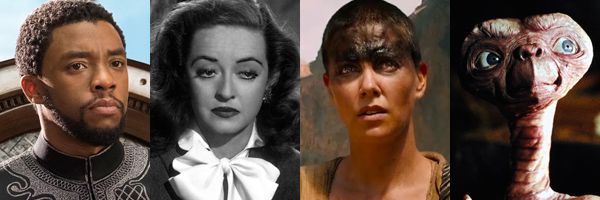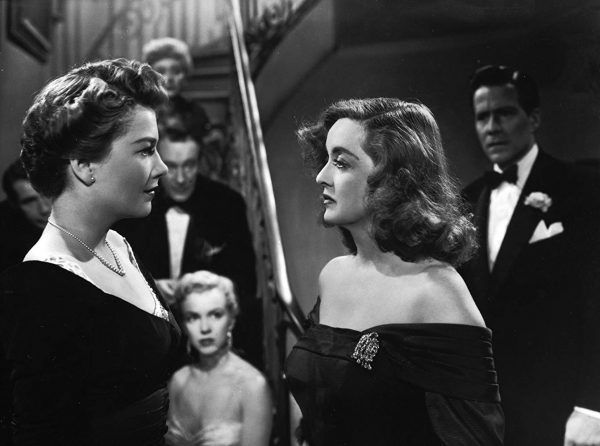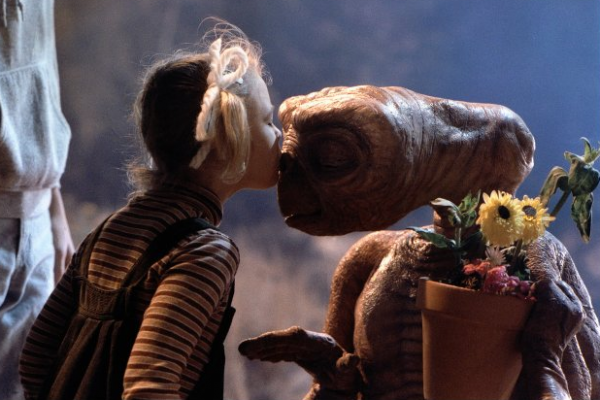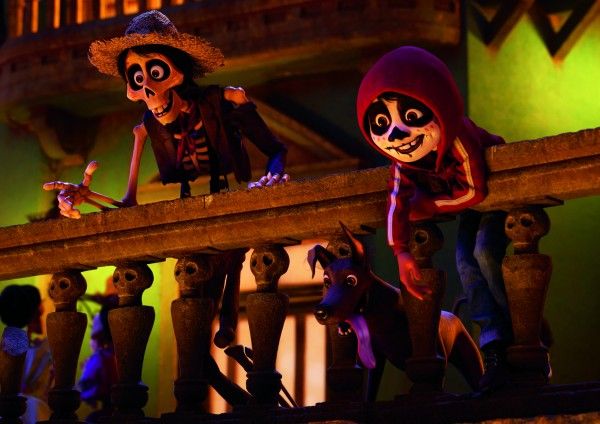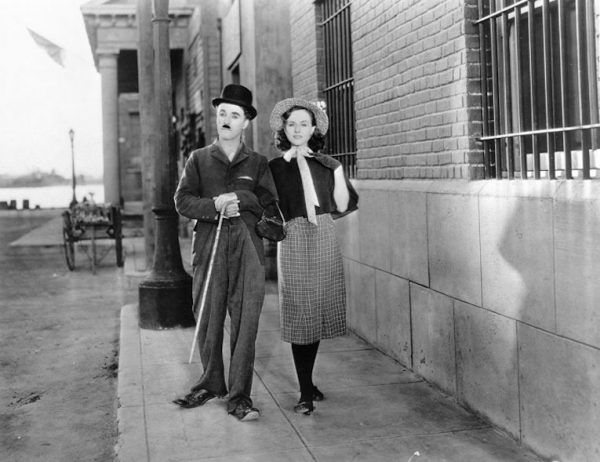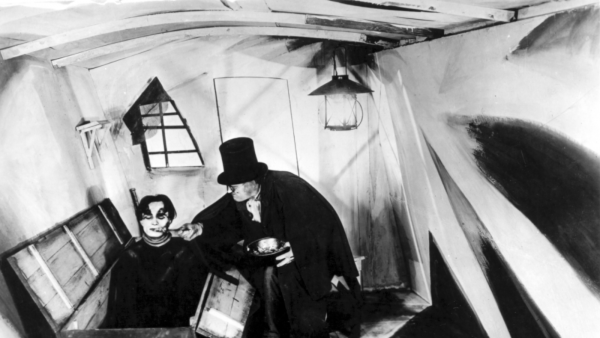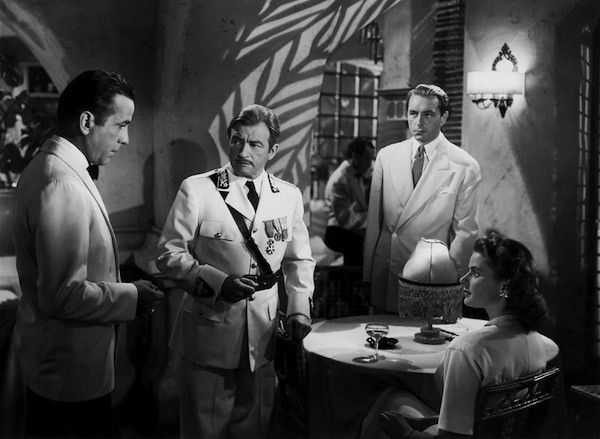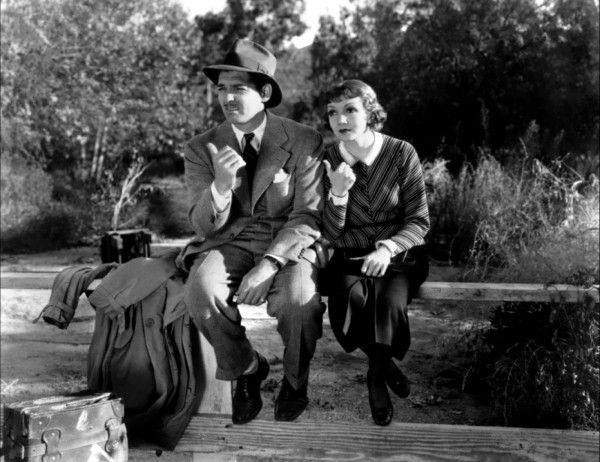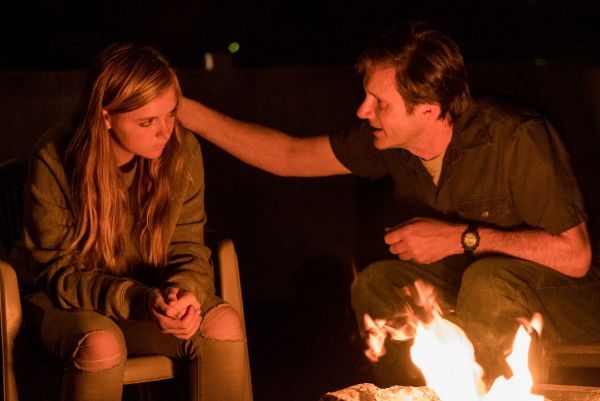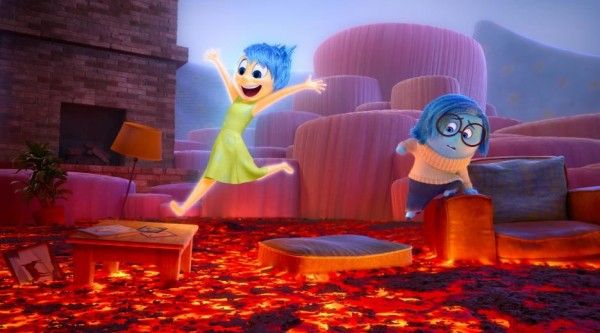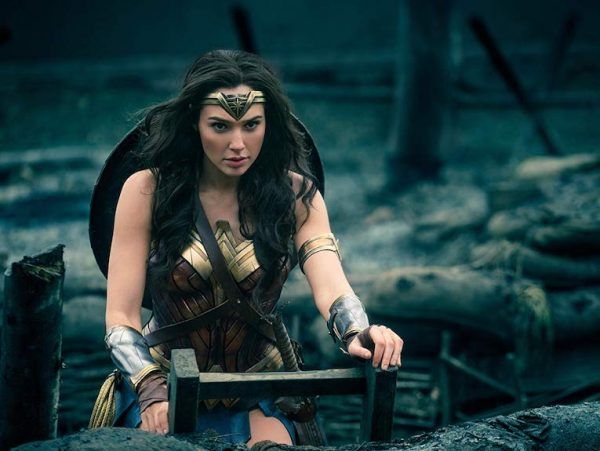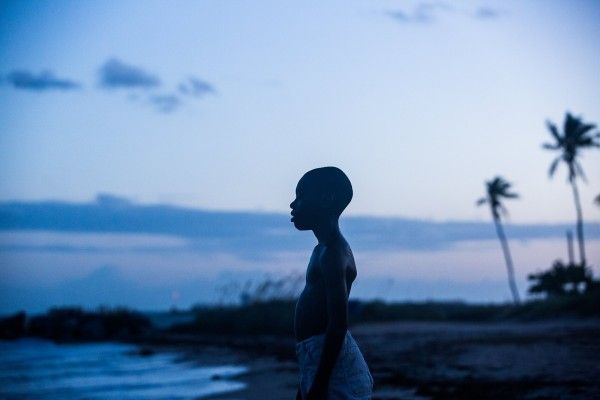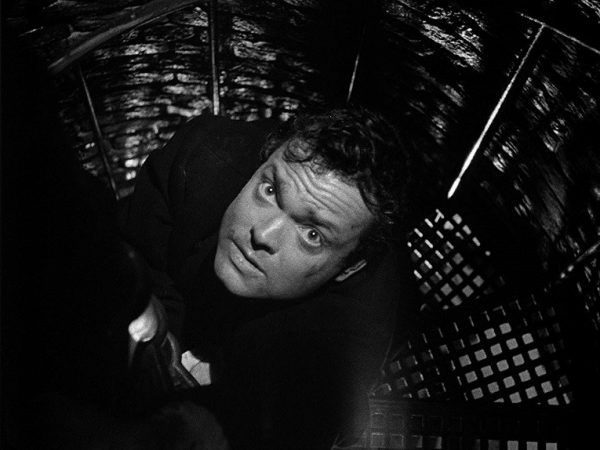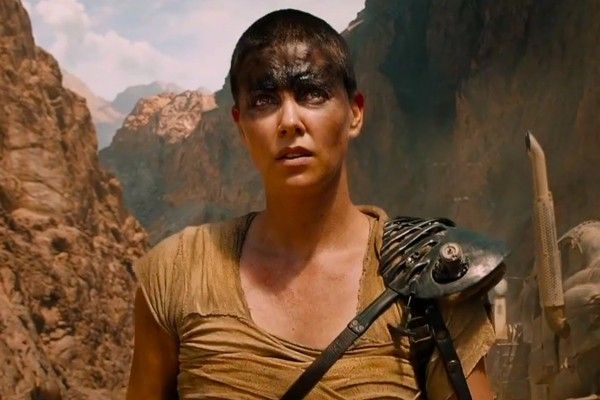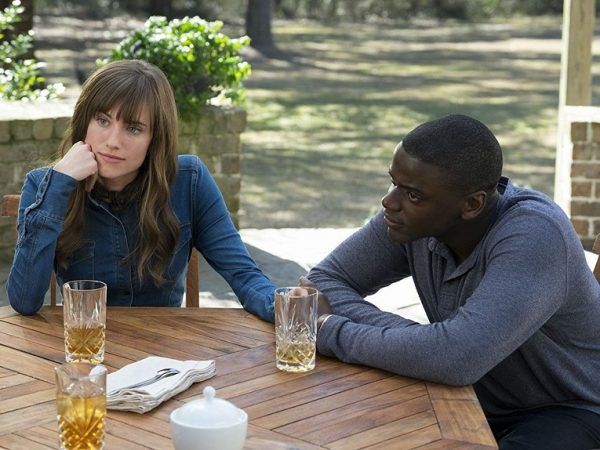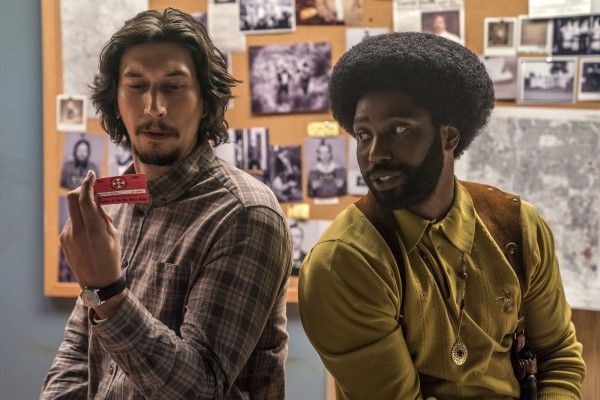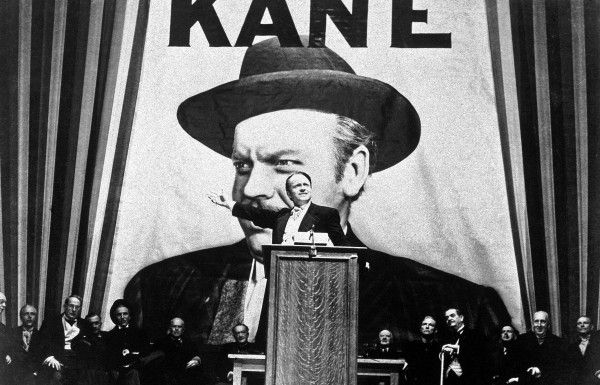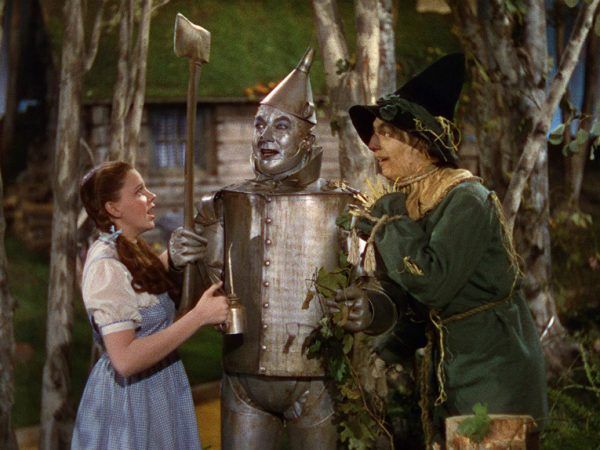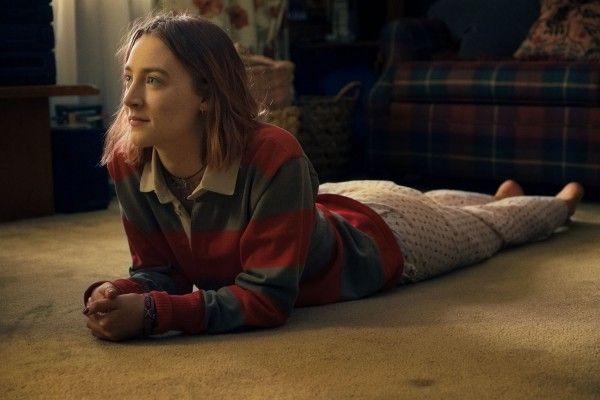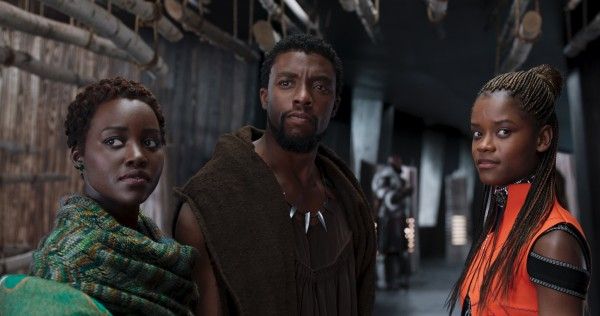With the sheer amount of content permeating every facet of media, from streaming to physical media, it’s hard wading through everything to find the best of the best. Thankfully the folks at Rotten Tomatoes have created a handy list of the top-rated features on their site to give audiences a starting point for finding the enduring classics that might connect with them.
But the list is just a starting point. A bird's eye view. So we wanted to look closer at the list itself and the movies on it. What is it about them that has allowed them to rise to the top and become the highest-rated movies on Rotten Tomatoes?
It's important to note that the ranking of the list—as crafted by Rotten Tomatoes itself—was created using a movie's "Adjusted Score." RT officially explains the score as follows:
Each critic from our discrete list gets one vote, weighted equally. A movie must have 40 or more rated reviews to be considered. The Adjusted Score comes from a weighted formula (Bayesian) that we use that accounts for variation in the number of reviews per movie.
This adjustment is made to account for the volume of reviews a movie receives. So if a movie only has four reviews, but all are positive, it technically has a 100% on Rotten Tomatoes. But if a movie has 483 reviews and a 96% score, that average is technically harder to achieve given the sheer number of reviews that exist.
So without further ado, let's dig into the top 20 highest-rated movies on Rotten Tomatoes.
20. All About Eve (1950)
RT Score: 100%
One of the quintessential features about show business, All About Eve is the Single White Female of the 1950s. Legendary actress Bette Davis plays legendary actress Margo Channing who takes a shine to a sycophantic fan named Eve (Anne Baxter). But as Margo and her friends soon realize, Eve has more than just friendship on her mind; she actually wants to steal Margo’s career from her, and everything that comes with it.
Directed and written by Joseph Mankiewicz, All About Eve was a critical darling upon release in 1950. Critics praised the acid-tongued dialogue and the acting of all involved. It would eventually win six Academy Awards, including Best Picture. Since its release it’s often called one of the smartest films to exist with its insider-view of the theater world that many believe is synonymous with filmmaking. It holds a perfect 100% on Rotten Tomatoes, and Roger Ebert cited it as Bette Davis’ finest work. It’s a crackling story that reminds everyone to watch out because your friends and enemies might just be one and the same.
19. Dunkirk (2017)
RT Score: 92%
It might surprise many to realize this is the only feature directed by Christopher Nolan to enter this list. Nolan’s tenth feature film follows the various men from Belgium, Great Britain, and France who fought and died during the battle of Dunkirk in WWII. The film was a long-time passion project for Nolan who initially conceived of it in the early 1990s. The film’s visceral imagery was often compared to Steven Spielberg’s Saving Private Ryan, and Nolan crafted the entire narrative as something of a time puzzle. The all-star cast often takes a backseat to the sheer power of the cinematography and technical prowess.
Dunkirk went on to win three Academy Awards for sound and editing and made over $500 million worldwide. Though it holds a 92% on RT, critics at the time cited its script, direction, cinematography, and score as worthy of praise, with many considering it Nolan’s best as well as one of the foremost features on WWII.
18. E.T. the Extra-Terrestrial (1982)
RT Score: 98%
One of the most iconic images of cinema is little Elliott (Henry Thomas) and his friends traveling across the moon to help their alien buddy E.T. “phone home.” The Steven Spielberg-directed feature is a heartfelt, funny, and compassionate story of friendship wrapped up in a coping with divorce narrative (heavy stuff for a kid’s film). On a scant budget of just $10 million, E..T the Extra-Terrestrial has netted nearly $800 million since its release in 1982 (it was re-released in 1985 and 2002) and surpassed Star Wars as the highest-grossing film of all time. It also won four Oscars, mainly in effects and sound as well as the John Williams-created score that’s endured alongside the movie.
It’s a film that connected with audiences so much it was screened at the White House for then-President Ronald Reagan, made Princess Diana cry, and was showcased at the United Nations. Interestingly, E.T. the Extra-Terrestrial won universal acclaim upon release but boasts a 98% on RT with one negative review.
17. Coco (2017)
RT Score: 97%
The first of three Disney films on this list (excluding the Fox merger), Coco tells the story of a little boy named Miguel who wants to be a musician. Unfortunately his family, for reasons unknown to him, has placed a ban on music. So when Miguel steals the guitar of a long-dead and famous Mexican musician he is accidentally sent to the Land of the Dead where he must reunite with his ancestors and learn about his family’s past.
Coco marked the first motion picture to boast an all-Latino cast and have a nine-figure budget. It was also Pixar’s first film with a Latino lead character. Like all Pixar features Coco is a blend of humor and heart, with a final scene that is an emotional gutpunch. The songs, penned by Frozen lyricists Kristen Anderson-Lopez and Robert Lopez, are spunky and infectious with the track “Remember Me” going on to win Best Original Song at the 2018 Academy Awards; the film also won Best Animated Feature.
Coco boasts a 97% on Rotten Tomatoes receiving praise for its rich characters and colorful animation.
16. Modern Times (1936)
RT Score: 100%
Whether you’ve seen one of his films or not, nearly everyone can identify Charlie Chaplin’s “the Tramp” character. The kind-hearted vagrant with a mustache and bowler hat had been Chaplin’s bread and butter since the mid-1900s. Interested in the nature of machinery, especially in the midst of the Great Depression’s unemployment, Chaplin assembled a movie wherein his Tramp character plays a factory worker struggling to deal with modern technology and the aftermath of losing his job. Chaplin hoped Modern Times would be his first “talkie,” but decided to abandon the idea and keep the Tramp silent for as long as he could. (The character’s first sound film would be four years later in The Great Dictator.)
Though it won no awards in 1936, Modern Times is considered Chaplin’s best feature and is his most popular, boasting a perfect 100% on RT. Reviews at the time were positive, though not overly effusive and it was not commercially successful in the United States with its political views on labor being cited as controversial. Modern Times is often championed for prophesying our increased dependence on machinery and automation, all seen through the eyes of one little Tramp.
15. The Cabinet of Dr. Caligari (1920)
RT Score: 100%
Another 100% feature on the list, The Cabinet of Dr. Caligari is a silent German Expressionist film about a somnambulist (or sleepwalker) played by Conrad Veidt, who commits murders at the behest of the evil Dr. Caligari (Werner Krauss).
A landmark in horror history, The Cabinet of Dr. Caligari is usually taught in film schools as the best example of German expressionism. The movement is commonly identified for its reliance on dark and twisted imagery, sharp and oblique angles, and shadows painted directly on the sets themselves. The film is perceived to be a war allegory, with Veidt’s Cesare the German soldiers fighting in WWI and Dr. Caligari the government sending them off to their deaths. Today the feature is a creepy tale of control with a dreamlike atmosphere and stark cinematography. It’s a highly memorable silent film.
Surprisingly, the film was marketed as a standard horror film, free of artistic pretensions and captured an audience upon release in 1920. It was distributed in the U.S. the next year but was pulled from theaters after protests regarding the presentation of German features during wartime. It’s unclear how the movie was received in 1920. Some film theorists have said it was a commercial and critical success while others maintain it was a critical failure that was “too high-brow to become popular in Germany,” this per Siegfried Kracauer. Regardless, The Cabinet of Dr. Caligari has become a foundational film and a must-see for any fans of horror.
14. Casablanca (1942)
RT Score: 98%
When asked to say the first classic era film you've seen, the usual answer is this 1942 war drama directed by Michael Curtiz. Humphrey Bogart plays Rick Blaine, an apathetic bar owner in the Vichy-controlled city of Casablanca. When he’s reunited with Ilsa (Ingrid Bergman), the woman who got away, Rick is forced to reconcile with his past and his own response to the events going on in the city.
Casablanca remains a perfect example of why studio-era cinema has endured. Its stars are A-list and utterly flawless, the directing isn’t technologically focused but geared towards the performances, and it has serious stakes. However, while filming it was assumed that Casablanca would just be another war drama in a decade dominated by them. You might say the studio didn’t think it’d amount to a hill of beans.
Reviews in 1942 were pleasant with resident critic Bosley Crowther applauding its sentiment. Other papers, like The New Yorker, simply called the film “pretty tolerable.” With a budget of a little over $1 million the grosses were good but not spectacular. It wasn’t until the late-’50s that audiences started to appreciate the movie for the classic it is. Here’s looking at you, kid!
13. It Happened One Night (1934)
RT Score: 98%
One of the funniest screwball comedies out there, there’s nothing better than It Happened One Night. Claudette Colbert plays heiress Ellen Andrews who runs away from home because she can’t marry who she wants. She meets up with reporter Peter Warne (Clark Gable) and the two strike a deal: if she gives him an exclusive he won’t rat her out to her dad. Thus the two end up on a cross-country adventure with Ellen realizing her privilege and the two falling in love.
Screwball comedy was popular during the Depression as it positioned the wealthy in positions of goofiness (how times have changed). Colbert’s Ellen is relatable, a princess running away from the strictures of her rigid life. Gable’s Peter is scrappy, a man’s man. The two’s chemistry is fantastic and makes for some unforgettable comedy.
Interestingly, Colbert thought the movie was “the worst picture in the world and home studio Columbia didn’t think much of it either. Reviews were pleasant, with Variety saying there wasn’t a “particularly strong plot.” Word-of-mouth and the Depression creating a need for heartwarming stories helped the film do brisk business, eventually turning it into a hit. It won five Oscars, including both Best Actor and Actress for its leads, as well as Best Picture and is labeled as one of the best comedies ever made.
12. Eighth Grade (2018)
RT Score: 99%
Director Bo Burnham blew audiences away in 2018 with his feature directorial debut, Eighth Grade. The film follows Kayla (Elsie Fisher), who is about to finish her last week of middle school. As the tween prepares to transition to a new school, she's forced to confront all her social awkwardness and the problems she doesn’t want to follow her to high school.
Burnham was inspired to make Eighth Grade by his own adolescent anxieties. He translated that into a feature examining the generation of children who came of age with social media. Newcomer Elsie Fisher, who’d previously been known for voicing one of the little girls in Despicable Me, became an instant star after the film’s release for her performance as Kayla, garnering a Golden Globe nomination in the process (the film would receive no Oscar nominations). Eighth Grade holds a 99% Fresh rating on Rotten Tomatoes with reviews praising its “supreme awkwardness” and “achingly honest” script.
11. Inside Out (2015)
RT Score: 98%
In 2015, Disney and Pixar got psychological with Inside Out, the colorful tale about the anthropomorphic feelings that control the minds of every being on this planet. In this case, the audience meets the emotions of a girl named Riley. Joy (voiced by Amy Poehler) wants Riley, who is moving from her hometown of Minnesota to San Francisco, to have the perfect transition. But when Sadness (voiced by Phyllis Smith) messes things up it’s up to Joy to get the little girl’s mind back in order.
With the success of the 2009 film Up director Pete Doctor was able to pitch this movie, inspired by his daughter Elie personality change as she became a teenager. The film was a bit of a game-changer for the studio, the first to not be intensely overseen by Pixar’s former chief creative officer John Lasseter and the first to have half the story crew be comprised of women.
Inside Out premiered out of competition at the Cannes Film Festival in 2015 and grossed over $850 million worldwide with the biggest opening gross for a Pixar movie at the time. It holds a 98% Fresh rating on Rotten Tomatoes with the critical consensus being that it’s “another outstanding addition to the Pixar library of modern animated classics.”
10. Wonder Woman (2017)
RT Score: 93%
After several decades in development, Warner Bros. announced in 2010 plans to adapt Wonder Woman for the screen. With an at-the-time untested director in Patty Jenkins and a leading lady who wasn’t a household name in Gal Gadot, Wonder Woman was considered a gamble that paid off big time.
Gadot plays Diana of Themyscira, a princess living on an island of Amazonian women warriors. When a WWI spy (played by Chris Pine) crash-lands on Themyscira it kicks off a series of events that sees Diana leave home to travel to England. Diana hopes to find a “Godkiller” weapon to stop the evil god Ares from destroying humanity.
Wonder Woman connected with audiences everywhere but none more so than women, who found the movie’s predominantly female cast and lack of male gaze to be refreshing. In a time where politics were making women fear everything, Diana and the women of Themyscira gave them hope. The film was a success financially and garnered incredibly positive reviews despite the online discourse that dominated social media. It was considered DC’s best feature at the time and kick-started a wave of discussion on the roles of women, both in front of and behind the camera.
9. Moonlight (2016)
RT Score: 99%
The Oscars mistake heard round the world is usually cited as overshadowing the sheer power of Barry Jenkins’ powerful tale of love between two African-American men. Everything in Moonlight, from the performances to Nicholas Britell’s score, to the luminous cinematography, is astounding.
Director Barry Jenkins was reluctant to tackle a second film after his 2008 feature, Medicine for Melancholy, debuted. After that he wasn’t able to get a script into production. Urged on by his producer, Jenkins took a shot at adapting Tarell Alvin McCaraney’s play In Moonlight Black Boys Look Blue. The finished product pointedly discussed black masculinity, particularly where it regards homosexuality, poverty and struggle, and the relationships between families.
On a budget of just $4 million, Moonlight grossed $65.3 million worldwide in 2016. It holds a nearly perfect 99% on Rotten Tomatoes with several reviews praising the film’s authentic and personal story. It would win three Oscars, including Best Picture where it infamously was thought to have lost to La La Land. A presenter snafu led to the most controversial Oscars ceremony in years.
8. The Third Man (1949)
RT Score: 99%
Directed by the acclaimed British auteur Carol Reed with a script by Grahame Green, The Third Man is a landmark in British film noir. The Third Man follows Holly Martins (Joseph Cotten), a man sent to Vienna on the behest of his friend Harry Lime (Orson Welles). But when Holly discovers Lime’s been murdered it kickstarts a twisted and wholly unpredictable mystery.
With its stark black-and-white cinematography and heavy use of Dutch angles, The Third Man is considered one of the most expressive and cynical features to come out of post-WWII Britain. The feature is not only regarded for its look, but its acting, and a third-act twist that is still a highlight for fans today.
The Third Man became the most popular film in Britain in 1949, though the reviews were tepid elsewhere. Critics in the U.S. praised it, even if a few thought the cinematography was overwhelming. Surprisingly, the film was nominated and won just one Oscar for Robert Kasker’s “deliriously tilted” cinematography. Since its release the film is considered a masterpiece and a must-watch for film aficionados.
7. Mad Max: Fury Road (2015)
RT Score: 97%
In 1979 Australian director George Miller debuted Mad Max about a post-apocalyptic world. The film had two sequels, 1983’s Mad Max 2: The Road Warrior and 1985’s Mad Max Beyond Thunderdome. The films made Miller a cult favorite who would go on to direct The Witches of Eastwick (1987) and Happy Feet (2006). Miller also was offered a chance to make a big-scale Justice League movie that legendarily crashed and burned. But in that time Miller was always working on a fourth Mad Max film. After obtaining the rights in 1995 he spent the next 20 years attempting to get the film made.
It wasn’t until 2009 that Warner Bros. offered to help Miller with the film and in 2011 Mad Max: Fury Road entered production. The film followed a new incarnation of Max (this time played by Tom Hardy) and a woman named Furiosa (Charlize Theron) attempting to liberate a group of female prisoners. The intense action and physical effects remain remarkably revolutionary in an age of CGI, and numerous essays have been written on the film’s feminism.
With a $200 million dollar budget it would have been difficult for the feature to turn a significant profit and only grossed $378 million worldwide. It was cited by Forbes as “too expensive, but not really a flop.” Reviews were strong with several critics championing Fury Road as the greatest action feature ever made. The film won six Academy Awards in the tech field, including Best Costumes and Production Design and, more importantly, has introduced Max and his gang to a whole new generation. The movie has a 97% on RT.
6. Get Out (2017)
RT Score: 98%
Before he was an Oscar-nominated director, Jordan Peele was best known as one half of the comic duo Key and Peele. After his comedy show went off the air in 2015, Peele transitioned to directing and burst out the gate with a movie that challenged audiences’ thoughts on race, history, and the nature of the horror movie. In Get Out,Daniel Kaluuya plays Chris, a black man invited to meet the parents of his white girlfriend. But what starts out as an awkwardly weird weekend turns into a terrifying tale of cultural appropriation.
Get Out flew under the radar right up until the moment of release, premiering at the Sundance Film Festival a month before hitting theaters nationwide. Upon release in 2017, reviews were extremely enthusiastic. Writers were praising the film from every angle, from its presentation of the white savior trope to how it looks at black culture butting up against white society. Get Out was a box office success, a critical darling and, more importantly, made Jordan Peele the fifth Black man nominated for Best Director. He won the Oscar for Best Original Screenplay, and the film currently stands at 98% on RT.
5. BlacKkKlansman (2018)
RT Score: 96%
Spike Lee has been challenging audiences’ thoughts on race since the 1980s, but it wasn’t until he adapted the story of Colorado Springs police officer Ron Stallworth that he nabbed his first Best Director nomination.
In the 1970s, Stallworth (played by John David Washington) was the first Black man hired to the Colorado Springs police department. When he stumbles upon an ad for the Ku Klux Klan, Stallworth decided to infiltrate the organization with the help of a white fellow officer (Adam Driver). BlacKkKlansman is at times both painfully humorous and utterly terrifying. Lee and screenwriters Charlie Wachtel and David Rabinowitz create something that feels timely and, unfortunately, timeless.
A box office success upon release, BlacKkKlansman drew as much criticism as it did praise. Lee’s provocative story drew rave reviews from critics, while director Boots Riley took to social media to decry the director’s use of inaccurate facts for narrative entertainment. Regardless, the film holds a 96% on Rotten Tomatoes and was nominated for six Academy Awards. Lee didn’t win for Best Director but did get a chance to make a speech at the awards ceremony when the film won for Best Adapted Screenplay.
4. Citizen Kane (1941)
RT Score: 100%
If you’ve studied film in any capacity you’ve seen and/or heard “Rosebud,” the plaintive cry that anchors Orson Welles’ filmic monument, Citizen Kane. Welles was just 25 when he wrote, directed, starred and produced Citizen Kane. Inspired by the life of newspaper tycoon William Randolph Hearst, Welles created newspaper tycoon Charles Foster Kane, an ambitious man who reaches the heights of professional glory at the expense of personal relationships.
Citizen Kane is a marvel of filmmaking from its directing to its cinematography, with director of photography Gregg Toland creating several new techniques that have become de rigueur in cinema today. The film’s release history already has several books written on it, but the movie irked Hearst immensely. He attempted to have the film stopped and when that didn’t work he banned all advertising, reviews, or mentions in any of the newspapers he owned. Several major theaters refused to screen it for fear of running afoul of Hearst and his lead gossip columnist, Louella Parsons.
When Citizen Kane finally did open it was a box office disappointment, playing to near empty houses in rural areas and major cities. Despite several good reviews at the time the film was the first (though far from the last) time Welles would be in the red. It was nominated for nine Oscars regardless of Hearst’s campaign, though it only won one for Best Original Screenplay. Now Citizen Kane is regarded as a masterpiece, the film by which all other films are judged, and Welles’ name is positioned firmly as one of the greatest directors of our time.
3. The Wizard of Oz (1939)
RT Score: 98%
It’s hard to believe but The Wizard of Oz only has a 98% on Rotten Tomatoes! Who could possibly dislike the most charming, fun, sweet movie to ever exist? One that’s made a legion of children smile and has inspired nearly every movie to follow? It’s just baffling. The story of Dorothy (Judy Garland) and her trip over the rainbow to the land of Oz has countless books written on its production, which involved numerous directors, costume changes, and actor swaps, but the finished product remains just as dazzling today as it did in 1939.
The Wizard of Oz came out in one of the best years for cinema and, interestingly enough, is the only feature from the Golden Year to make this list. This was home studio MGM’s pony (alongside Gone With the Wind). The movie was a massive undertaking with numerous worlds created on a studio backlot (and a revolving door of directors). Judy Garland was just 16 when she got the role of a lifetime as Dorothy Gale, taking on a role that initially was offered to Shirley Temple.
It isn’t surprising that the movie received huge praise in 1939; not from The New Yorker though who called it a “stinkeroo.” Because of its large budget it took several years for the movie to reach a profit, aided by subsequent re-releases throughout the ‘40s. It did only win two Oscars (out of a low six nominations) for Best Song and Score. But no matter because the movie now is cited as one of the best films ever made with nearly all of its cast becoming legends.
2. Lady Bird (2017)
RT Score: 99%
For a generation of women in 2017, watching director Greta Gerwig’s feature Lady Bird was like being sent right back to their high school. The story of a confident young woman named Lady Bird (Saorise Ronan) and her desire to leave her Sacramento hometown was relatable, funny, cringe-worthy at times but always delightful. Gerwig, the star of films like Frances Ha and Mistress America, had been working on the script for years and was determined to make it her first solo directorial effort.
Lady Bird grossed nearly $80 million worldwide and was nominated for five Academy Awards including Best Picture. Greta Gerwig became just the fifth woman nominated for Best Director, the first since Kathryn Bigelow became the first woman Best Director winner for The Hurt Locker in 2009.
1. Black Panther (2018)
RT Score: 96%
By the time Black Panther was released the Marvel Cinematic Universe had been a presence for ten years. And yet, in all that time, audiences were still asking for a superhero lead of color.
All that changed with the release of Ryan Coogler’s Black Panther, an exuberant, rich, and highly entertaining story about the citizens of the fictional country of Wakanda. Led by T’Challa (Chadwick Boseman) as the eponymous Black Panther, the nation of Wakanda must band together to stop the evil Killmonger (Michael B. Jordan).
In development since 1992 - Wesley Snipes wanted the role badly - Black Panther went through its fair share of development hell. With Snipes leaving the project in the early 2000s, Marvel finally greenlit it as part of their phase two slate in 2014 with Boseman, who had previously played Jackie Robinson and James Brown, as King T’Challa.
Black Panther grossed over $1 billion dollars in 2018, becoming the highest-grossing solo superhero film and the highest-grossing film by a black director. More iconic was its winning of three Academy Awards, including Ruth Carter’s fantastic costume design. It also marked the first time a Marvel feature was nominated for Best Picture.

